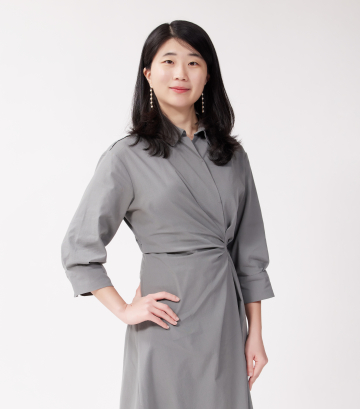조교수
신혜영 Shin, Hyeyoung
연구분야
신경생물학
본 연구실은 지각의 신경 기전을 이해하는 것을 목표로 한다. 우리가 오감을 통해서 사물을 지각할 때, 뇌는 단순히 감각 정보를 수집하는 데서 멈추지 않고, 이 세상에 대한 사전 지식을 병합하여 지각의 근원이 되는 사물을 추론 해 내는 과정을 거치게 된다. 그러나 뇌과학에서는 여태 지각을 연구 할 때 대게 뇌가 감각정보를 얼마나 충실히, 또는 얼마나 정확히 인코딩 해내는지에 초점을 맞춰왔다. 본 연구실은 지각의 목표가 정확한 인코딩이 아닌 사물의 추론이라는 전제 하에, 뇌 활동을 분석하고 뇌과학의 근본적인 이론들을 재해석 하고자 한다. 예를 들어, 대뇌 영역 간에 신호 전달이 어떻게 이뤄지는 가에 대해, 몇 개의 신경세포들의 몇 millisecond 간 협동해야 신호가 전달 되는가에 대한 논쟁이 많은데, 본 연구실은 참신한 사고방식으로 이 난제를 접근하고자 한다. 이를 위해 본 연구실은 시스템 신경과학 (e.g., two-photon imaging, two-photon holographic optogenetics, extracellular electrophysiology)과 계산 신경과학 (e.g., machine learning decoding of neural population activity, network simulation) 분야에서 다양한 기술을 빌려 활용하고 있다.
학력/경력
학력
- - 2013.09 - 2020.05 박사: Brown University, Neuroscience
- - 2009.03 - 2013.02 학사: 연세대학교 생명시스템대학 생명공학
경력
- - 2023.03 - 현재 서울대학교 생명과학부 조교수
- - 2019.10 - 2023.02 Postdoctoral Scholar, University of California, Berkeley
주요논문
- Shin H, Ogando MB, Abdeladim L, Durand S, Belski H, Cabasco H, Loefler H, Bawany A, Hardcastle B, Wilkes J, Nguyen K, Suarez L, Johnson T, Han W, Ouellette B, Grasso C, Swapp J, Ha V, Young A, Caldejon S, Williford A, Groblewski P, Olsen S, Kiselycznyk C, Lecoq J, Adesnik H. Recurrent pattern completion drives the neocortical representation of sensory inference. bioRxiv. 2023 https://doi.org/10.1101/2023.06.05.543698
- Shin H, Adesnik H. Functional Roles of Cortical Inhibitory Interneurons (chapter in book titled “The Cerebral Cortex and Thalamus” by Usrey WM and Sherman SM)
- Abdeladim L*, Shin H*, Jagadisan UK*, Ogando MB, Adesnik H. Probing inter-areal computations with a cellular resolution two-photon holographic mesoscope. bioRxiv. 2023 https://doi.org/10.1101/2023.03.02.530875, *equal contributions
- Shin H, Moore CI. Persistent Gamma Spiking in SI Nonsensory Fast Spiking Cells Predicts Perceptual Success. Neuron. 2019 https://doi.org/10.1016/j.neuron.2019.06.014
- Shin H, Law R, Tsutsui S, Moore CI, Jones SR. The rate of transient beta frequency events predicts behavior across tasks and species. eLife. 2017 https://doi.org/10.7554/eLife.29086.001



